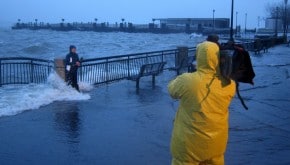
Instant news is definitely not a bad thing. There can be numerous people sitting in front of their television screen to get updates about their dear ones living near the affected area. But, this rush to report creates a huge mistake sometimes. Even a tiny mistake can prove to be unacceptable in such cases. A wrong data can get compounded after the video gets viral. In desperation of grabbing eye balls (in the competition with other media houses) they do not even leave out fake stories of heroism, photos from a previous disaster of the similar kind, etc. Everybody knows how adverse the impact of such fake data or pictures can be.
The social media updates and reports from different unreliable sources worsen the situation. Sometimes the media houses do not even wait for proper verification. This is the mad rush for ratings that can earn them good TRP at the cost of common man’s paranoia. The corporate houses are not much bothered about the authenticity of the news. All they are bothered about is whether people are watching the news in the break of which their ad is being flashed or not.
Sensational journalism has come a long way since it got started attracting the journalists. Now, it is done not only for the ratings and TRPs of the channels. It is done because corporate houses reap plum benefit out of those. Why should they back off as their unscrupulous (sometimes untrue news) journalism gets sponsored by the thriving corporate world? This is high time when a proper screening process has to be implemented to put a check on this.








0 Comments